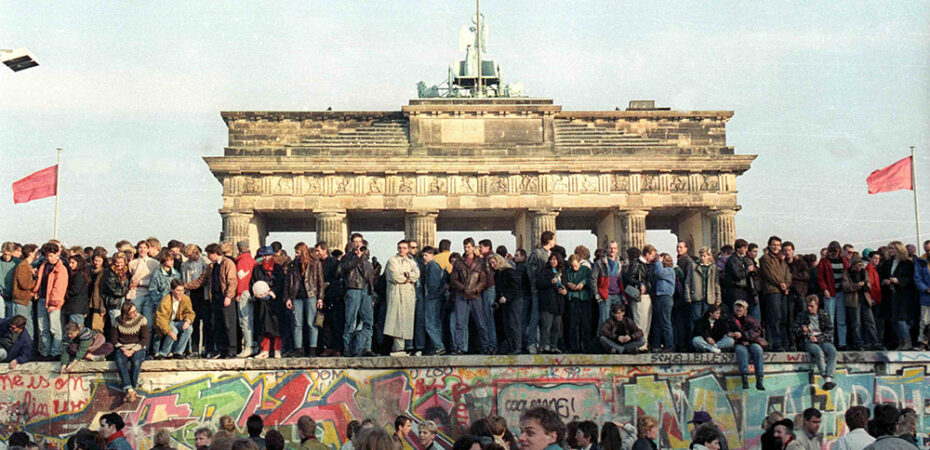Freedom, Scandal and the Fall of the Berlin Wall
A period of freedom that led to distrust
Father Robert J. Hater Comments Off on Freedom, Scandal and the Fall of the Berlin Wall
This period of history from The Priest magazine’s perspective opened with freedom in the air. People behind the Iron Curtain clamored for it. Through his visit to Poland and his powerful words, Pope John Paul II energized Poles to seek it. In the United States, riots and demands for freedom coming from the continuing Civil Rights Movement reflected it. Freedom was the backdrop of the time.
Freedom, the battle cry of renewal in the Church, was reflected in the Second Vatican Council “Declaration on Religious Liberty” (Dignitatis Humanae), a uniquely American contribution. This document enhanced the role it played worldwide. My experiences in teaching and pastoring during this period centered on religious education, liturgy and social justice.
In religious education, pastors and catechists became more and more concerned with what to teach and how to teach it. Although many focused on adult faith formation and how adults learn, the need to train catechists took center stage. Catholic colleges offered religious education majors and dioceses developed formation programs. The ministry of parish director of religious education prepared catechists to teach students the basics of their faith and to receive the sacraments.
As to liturgy, a new generation of liturgists, trained in the spirit of Vatican II, followed post-Vatican II directives for liturgical celebrations. They carried out their ministry, strongly influenced by the Rite of Christian Adults (RCIA), especially its emphasis on adults.
As to social justice, impressive steps were taken, following the lead of the hierarchy, who took prophetic stances, centered on the right to life and equality among all people, especially the poor and downtrodden.
As this happened, women increasingly became involved in the Church and clamored for greater responsibilities, especially in leadership positions. The push toward women’s equality in the secular world put added pressure on the Church to do the same.
Women’s role in Church leadership was a key topic in my pastoral ministry courses at the university level. When directing women graduate students, it became clear that the Church needed to take this issue seriously so that women would stay affiliated with the Catholic community.
The increased demands for freedom occurred worldwide. Having reflected on the multiple demands for freedom, we now consider its impact on the fall of the Soviet Union, the priest crises and, if you will allow me, how it affected my work.
The energy that sustained the cry for freedom and the pace of change worldwide was reflected in the breakup of the Soviet Union. This desire was illustrated on June 12, 1987, by President Ronald Reagan. He stood before the wall that separated east and west Berlin (communism and freedom) and cried out, “Mr. Gorbachev, tear down this wall.”
Not long afterward, global demands for freedom and new world energy prevailed. The wall came down, and the demands and prayers of millions of oppressed people of more than 50 years asking for liberation from the Communist dictatorship were heard.
The U.S. Priest Crisis
Freedom took a different turn in the early 1980s when the Archdiocese of Cincinnati studied the number of priests who would be available to serve over the next 25 years. After the archbishop realized that a sharp drop-off was inevitable, steps were taken to address this issue. Something similar was happening in other dioceses, as they began consolidating or closing parishes.
This happened about the same time as the clerical abuse scandal took the headlines and cases were disclosed in increasing numbers. In addressing this issue, the cases and the Church officials’ cover-ups caused an erosion of trust among the laity. This abuse of freedom devastated the Church.
The lost credibility led to a lack of trust, arrests, court trials and skepticism about the future Church. To this day, this continues to haunt the Church. It accentuated the priest shortage, resulting in the closure of some parishes and a declining number of parishioners.
During my travels giving lectures during these years, I experienced a growing lack of trust on many levels. I also saw the results of the newfound freedom of the laity to assume their roles in parishes and in the Church as a whole. This was no easy task, involving faith and confidence that things would be better in the future.
The clerical abuse scandal changed the spirit of a once-credible Church. It affected the credibility of clerics, church ministers and others who came into a diocese to give lectures, retreats or celebrate marriages. This resulted, in part, from the general distrust in the community of believers.
On the positive side, my experience when lecturing around the country helped me realize that the Holy Spirit was calling the laity to new ministries in the Church. I felt privileged when I was called to motivate them to take up their role as missionary disciples.
FATHER ROBERT J. HATER, Ph.D., a Cincinnati archdiocesan priest, is an internationally known author and lecturer. He is professor emeritus at the University of Dayton and resides at St. Clare Parish in Cincinnati.





